by Dale Mugford
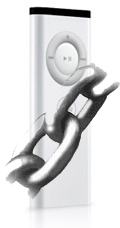 Recently my brother was in a lecture at his University, and had to get up and go to the bathroom. To feel comfortable leaving his Mac unattended, he uses iAlertU, a nice little security application from Slapping Turtle that turns your MacBook’s speakers, iSight camera, motion sensors and screen into an alarm system capable of locking up the computer. It even takes a snapshot of the would-be thief and makes a noisy racket with a car-alarm like response, even if it’s just moved, let alone used.
Recently my brother was in a lecture at his University, and had to get up and go to the bathroom. To feel comfortable leaving his Mac unattended, he uses iAlertU, a nice little security application from Slapping Turtle that turns your MacBook’s speakers, iSight camera, motion sensors and screen into an alarm system capable of locking up the computer. It even takes a snapshot of the would-be thief and makes a noisy racket with a car-alarm like response, even if it’s just moved, let alone used.
Once the program is open, all you have to do is hold down the Menu button on your Apple remote to activate/de-activate your alarm. Of course, you should have your MacBook (Pro) paired with your remote for this purpose, otherwise anyone could ‘disarm’ your security system easily.
And it was when he was ‘arming’ iAlertU that he discovered something, much to the chagrin of other MacBook users in the hall below him: almost no one pairs their remotes with their MacBooks. Imagine the look on those in the hall as Front Row mystically opened on their screens.
Continue Reading »
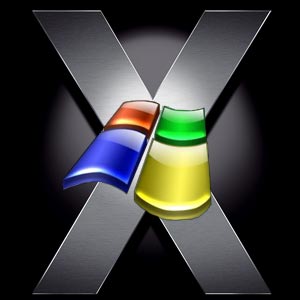 Now that Apple has made a full switch to Intel processors, running Windows on Macs has become more common than most people ever thought it would be. Be it on Parallels or Apple’s Boot Camp there is usually a need to run Windows on your Mac or have a second machine handy. This series of articles is about making Windows a more comfortable environment for a Mac user. Of course not all of the Mac elements will carry over, but we can get pretty close using mostly freeware. These articles are written for Windows XP SP2, however the majority of these programs have versions coming out for Windows Vista in the near future.
Now that Apple has made a full switch to Intel processors, running Windows on Macs has become more common than most people ever thought it would be. Be it on Parallels or Apple’s Boot Camp there is usually a need to run Windows on your Mac or have a second machine handy. This series of articles is about making Windows a more comfortable environment for a Mac user. Of course not all of the Mac elements will carry over, but we can get pretty close using mostly freeware. These articles are written for Windows XP SP2, however the majority of these programs have versions coming out for Windows Vista in the near future.
In this article we will emulate the most basic elements of the GUI of OS X Tiger. This means ditching the default Luna visual style that is reminiscent of Fisher Price Toys. Please keep in mind that this is only the first step, so not all the features of Tiger’s GUI will carry over quite yet. Please also note that it is possible to use the built in “Visual Style” feature to make your machine look like a Mac with a dll hack. But doing so will only skin the buttons, scroll bars, and the taskbar. For that reason we will not cover that in this article, but for more information on hacking the uxtheme.dll file in Windows XP take a look at this article on Neowin.net.
Continue Reading »
by Alex Curtis
 You know all about surfing the web. You’re a power-surfer! You keep in touch with your favorite websites every day. You open links in new background tabs to maximize your time and screen real estate. But do you know about RSS? This post is a quick glimpse at how you can keep up with your favorite websites far more efficiently, all within Mac OS X’s built in browser, Safari 2.0.
You know all about surfing the web. You’re a power-surfer! You keep in touch with your favorite websites every day. You open links in new background tabs to maximize your time and screen real estate. But do you know about RSS? This post is a quick glimpse at how you can keep up with your favorite websites far more efficiently, all within Mac OS X’s built in browser, Safari 2.0.
What is RSS?
Depending on who you talk to, RSS can stand for “Rich Site Summary” or “Really Simple Syndication,” and I think both help to describe what RSS does—respectively from two different perspectives: readers and publishers.
Continue Reading »
by Dale Mugford
I’m a proud owner of both an Intel iMac and MacBook, while my girlfriend is still quite fond of her iBook G4 12″, and plans on keeping it for awhile. I previously owned a 14″ iBook, and when the Intel iMac arrived, one of the first questions I had was “Can I boot both PPC and Intel machines from a multiple-partition drive?”
I was wondering if I could still use the external drive which had multiple partitions and served as my backup drive. I use SuperDuper!, and would make regular backups to the drive from the 3 PPC machines we had.
Continue Reading »
by Alex Curtis
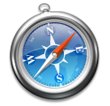 I’ve had a number of friends recently switch to Mac. They may have known how to use their Windows PCs well enough, but they weren’t what some may call “power users.” Having switched to the Mac, they’re finding themselves actually enjoying the use of their new computer, and wanting to know more. One of the first things I show them is some simple tips for browsing the web with Mac OS X’s built-in browser, Safari.
I’ve had a number of friends recently switch to Mac. They may have known how to use their Windows PCs well enough, but they weren’t what some may call “power users.” Having switched to the Mac, they’re finding themselves actually enjoying the use of their new computer, and wanting to know more. One of the first things I show them is some simple tips for browsing the web with Mac OS X’s built-in browser, Safari.
In our last Back to Basics, we explored how adding contacts to Address Book can add additional functionality to Safari.
This time, let’s look at some more basic features of the modern browsers that can dramatically improve your every day browsing.
Continue Reading »
by Alex Curtis
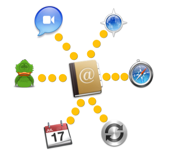 A little bit of information can go a long way—this is especially the case in Mac OS X. As you may have read in my previous two posts in this series (1 | 2), taking some time with your Mac’s built-in Address Book app can pay off in spades in functionality in other applications. Last time we looked at Mail app, this time, we’ll take a quick look at a few native and 3rd-party OS X apps.
A little bit of information can go a long way—this is especially the case in Mac OS X. As you may have read in my previous two posts in this series (1 | 2), taking some time with your Mac’s built-in Address Book app can pay off in spades in functionality in other applications. Last time we looked at Mail app, this time, we’ll take a quick look at a few native and 3rd-party OS X apps.
Browsers
Didn’t think that your web browser would bother looking up information from your contacts? Think again. There are at least two web browsers made for OS X that will allow you to look up a contact’s website, without even launching Address Book.
Continue Reading »
OS X Driving School
Written by: Adam Christianson
Categories: Hints & Tips
by Adam Christianson
An important aspect of learning to drive is knowing and understanding the signs and symbols we see when on the road. Your operating system also has many signs and symbols. The more you understand and can read those signs the better driver you will become. This a series will offer you quick little “driving” tips for OS X. In each lesson I will take a quick look at just one element of OS X and give you a little lesson in maximizing it’s functionality.
Traffic Lights
Being OS X users we are all familiar with OS Xs traffic signal. You know, those little red, yellow and green “lights” at the top left of each window? You are probably familiar with the basic functionality of these buttons. But these little guys are more tricked out than you would think.
Red means stop
You probably already know that clicking the red button on your window will close it. You many also know that holding down the ‘Option’ key while clicking the red button will close all the windows, but there is one more trick up reds sleeve. The “red light” also provides a bit of info that I find extremely helpful. Just like it’s real life counterpart it lets you know when to stop.  It alerts you when it might be time to stop and save your file. In many applications if you notice a little black circle inside the red button it is the OSes way of letting you know you are between saves. Once you save your file the black dot will disappear and then come back when you make your next change.
It alerts you when it might be time to stop and save your file. In many applications if you notice a little black circle inside the red button it is the OSes way of letting you know you are between saves. Once you save your file the black dot will disappear and then come back when you make your next change.
by Alex Curtis
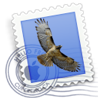 One of the real strengths of OS X is how information given to one app is be pulled into another automatically. This post will build on the previous one, showing how another apps that come with Mac OS X, in this case Mail, can use all the contact information you’ve already painstakingly added to Address Book. Let’s have a look, shall we?
One of the real strengths of OS X is how information given to one app is be pulled into another automatically. This post will build on the previous one, showing how another apps that come with Mac OS X, in this case Mail, can use all the contact information you’ve already painstakingly added to Address Book. Let’s have a look, shall we?
Continue Reading »
by Alex Curtis
 If you’re a Mac switcher from either Windows or Linux like I was a few years ago, one of the first applications you’ll want to get to know is Address Book. The sooner you import your contacts into Mac OS X’s Address Book, the sooner you’ll appreciate how a little bit of data like your contacts transform and compliment the Mac’s usability in other applications. Let’s take a look…
If you’re a Mac switcher from either Windows or Linux like I was a few years ago, one of the first applications you’ll want to get to know is Address Book. The sooner you import your contacts into Mac OS X’s Address Book, the sooner you’ll appreciate how a little bit of data like your contacts transform and compliment the Mac’s usability in other applications. Let’s take a look…
Continue Reading »
2nd Hand Success
Written by: Dale Mugford
Categories: Hints & Tips
A Buyer’s Guide to Finding the Perfect Used Macintosh
by Dale Mugford
 The used Mac market is at once vibrant, busy- and dangerous. As with any second-hand industry, there are awesome deals that make buying new seem downright crazy, and rip-offs that make you wish you’d paid the extra few hundred to ensure you got what you wanted.
The used Mac market is at once vibrant, busy- and dangerous. As with any second-hand industry, there are awesome deals that make buying new seem downright crazy, and rip-offs that make you wish you’d paid the extra few hundred to ensure you got what you wanted.
Firstly, how do you discern a good deal from a bad one? Secondly, What are the tell-tale signs of legitimate sellers, and those of scammers? Lastly, what distinguishes a decent used purchase from a killer one?
These questions are important to answer when you set your sights on a used Mac purchase, and you’re in luck if you need help: This article will fine-tooth comb the process of finding, evaluating and buying your brand new (used) Macintosh.
Continue Reading »
 Recently my brother was in a lecture at his University, and had to get up and go to the bathroom. To feel comfortable leaving his Mac unattended, he uses iAlertU, a nice little security application from Slapping Turtle that turns your MacBook’s speakers, iSight camera, motion sensors and screen into an alarm system capable of locking up the computer. It even takes a snapshot of the would-be thief and makes a noisy racket with a car-alarm like response, even if it’s just moved, let alone used.
Recently my brother was in a lecture at his University, and had to get up and go to the bathroom. To feel comfortable leaving his Mac unattended, he uses iAlertU, a nice little security application from Slapping Turtle that turns your MacBook’s speakers, iSight camera, motion sensors and screen into an alarm system capable of locking up the computer. It even takes a snapshot of the would-be thief and makes a noisy racket with a car-alarm like response, even if it’s just moved, let alone used.


 Now that Apple has made a full switch to Intel processors, running Windows on Macs has become more common than most people ever thought it would be. Be it on Parallels or Apple’s Boot Camp there is usually a need to run Windows on your Mac or have a second machine handy. This series of articles is about making Windows a more comfortable environment for a Mac user. Of course not all of the Mac elements will carry over, but we can get pretty close using mostly freeware. These articles are written for Windows XP SP2, however the majority of these programs have versions coming out for Windows Vista in the near future.
Now that Apple has made a full switch to Intel processors, running Windows on Macs has become more common than most people ever thought it would be. Be it on Parallels or Apple’s Boot Camp there is usually a need to run Windows on your Mac or have a second machine handy. This series of articles is about making Windows a more comfortable environment for a Mac user. Of course not all of the Mac elements will carry over, but we can get pretty close using mostly freeware. These articles are written for Windows XP SP2, however the majority of these programs have versions coming out for Windows Vista in the near future. You know all about surfing the web. You’re a power-surfer! You keep in touch with your favorite websites every day. You open links in new background tabs to maximize your time and screen real estate. But do you know about RSS? This post is a quick glimpse at how you can keep up with your favorite websites far more efficiently, all within Mac OS X’s built in browser, Safari 2.0.
You know all about surfing the web. You’re a power-surfer! You keep in touch with your favorite websites every day. You open links in new background tabs to maximize your time and screen real estate. But do you know about RSS? This post is a quick glimpse at how you can keep up with your favorite websites far more efficiently, all within Mac OS X’s built in browser, Safari 2.0. It alerts you when it might be time to stop and save your file. In many applications if you notice a little black circle inside the red button it is the OSes way of letting you know you are between saves. Once you save your file the black dot will disappear and then come back when you make your next change.
It alerts you when it might be time to stop and save your file. In many applications if you notice a little black circle inside the red button it is the OSes way of letting you know you are between saves. Once you save your file the black dot will disappear and then come back when you make your next change. If you’re a Mac switcher from either Windows or Linux like I was a few years ago, one of the first applications you’ll want to get to know is Address Book. The sooner you import your contacts into Mac OS X’s Address Book, the sooner you’ll appreciate how a little bit of data like your contacts transform and compliment the Mac’s usability in other applications. Let’s take a look…
If you’re a Mac switcher from either Windows or Linux like I was a few years ago, one of the first applications you’ll want to get to know is Address Book. The sooner you import your contacts into Mac OS X’s Address Book, the sooner you’ll appreciate how a little bit of data like your contacts transform and compliment the Mac’s usability in other applications. Let’s take a look…  The used Mac market is at once vibrant, busy- and dangerous. As with any second-hand industry, there are awesome deals that make buying new seem downright crazy, and rip-offs that make you wish you’d paid the extra few hundred to ensure you got what you wanted.
The used Mac market is at once vibrant, busy- and dangerous. As with any second-hand industry, there are awesome deals that make buying new seem downright crazy, and rip-offs that make you wish you’d paid the extra few hundred to ensure you got what you wanted.
